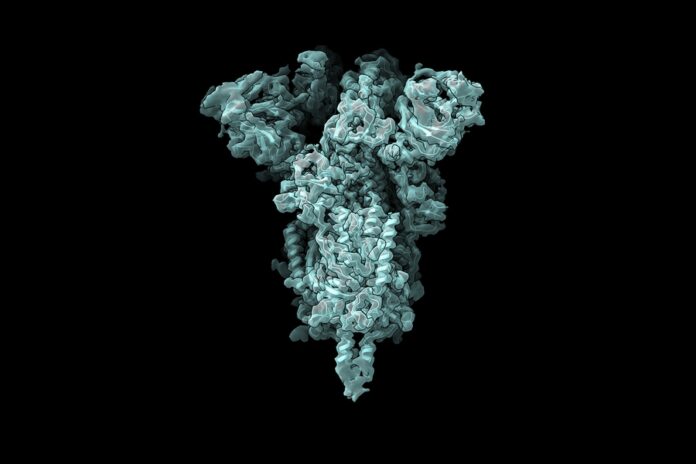Cryo-electron microscopy (cryo-EM) permits researchers to deliver high-goal, three-dimensional pictures of minuscule particles, for example, proteins. This strategy turns out best for imaging proteins that exist in just single conformity, yet MIT scientists have now built up an AI calculation that encourages them to distinguish numerous potential designs that a protein can take.
Not at all like AI methods that expect to anticipate protein structure from arrangement information alone, protein design can likewise be tentatively decided to utilize cryo-EM, which produces many thousands, or even millions, of two-dimensional pictures of protein tests frozen in a meager layer of ice. PC calculations at that point piece together these pictures, taken from various points, into a three-dimensional portrayal of the protein in a cycle named reproduction.
In a Nature Methods paper, the MIT specialists report another AI-based programming for recreating different designs and movements of the imaged protein — a significant objective in the protein science local area. Rather than utilizing the conventional portrayal of protein structure as electron-dispersing powers on a 3D cross-section, which is illogical for displaying different designs, the analysts presented another neural organization engineering that can effectively produce the full gathering of constructions in a solitary model.
With their product, they found protein movements from imaging datasets where just a solitary static 3D design was initially distinguished. They additionally envisioned huge scope adaptable movements of the spliceosome — a protein complex that organizes the joining of the protein-coding successions of translated RNA.
Imagining a multistep interaction
The specialists exhibited the utility of their new methodology by dissecting structures that structure during the way toward gathering ribosomes — the phone organelles liable for perusing courier RNA and making an interpretation of it into proteins. Davis started contemplating the design of ribosomes while a postdoc at the Scripps Research Institute. Ribosomes have two significant subunits, every one of which contains numerous individual proteins that are amassed in a multistep cycle.
To consider the means of ribosome get together in detail, Davis slowed down the cycle at various focuses and afterward took electron magnifying lens pictures of the subsequent constructions. At certain focuses, obstructing get together brought about a collection of simply a solitary design, recommending that there is just a single route for that progression to happen. In any case, impeding different focuses brought about a wide range of constructions, recommending that the get together could happen in an assortment of ways.
In the new Nature Methods study, the specialists showed the force of the strategy by utilizing it to distinguish another ribosomal express that hadn’t been seen previously. Past investigations had recommended that as a ribosome is amassed, huge underlying components, which are similar to the establishment for a structure, structure first. Simply after this establishment is shaped are the “dynamic locales” of the ribosome, which read courier RNA and blend proteins, added to the design.
In the new investigation, notwithstanding, the analysts found that in a little subset of ribosomes, around 1 percent, a design that is typically added toward the end really shows up before get together of the establishment. To represent that, Davis conjectures that it very well may be excessively vivaciously costly for cells to guarantee that each and every ribosome is amassed in the right request.
Viral proteins
The scientists are currently utilizing this strategy to contemplate the Covid spike protein, which is the viral protein that ties to receptors on human cells and permits them to enter cells. The receptor restricting area (RBD) of the spike protein has three subunits, every one of which can point either up or down.

